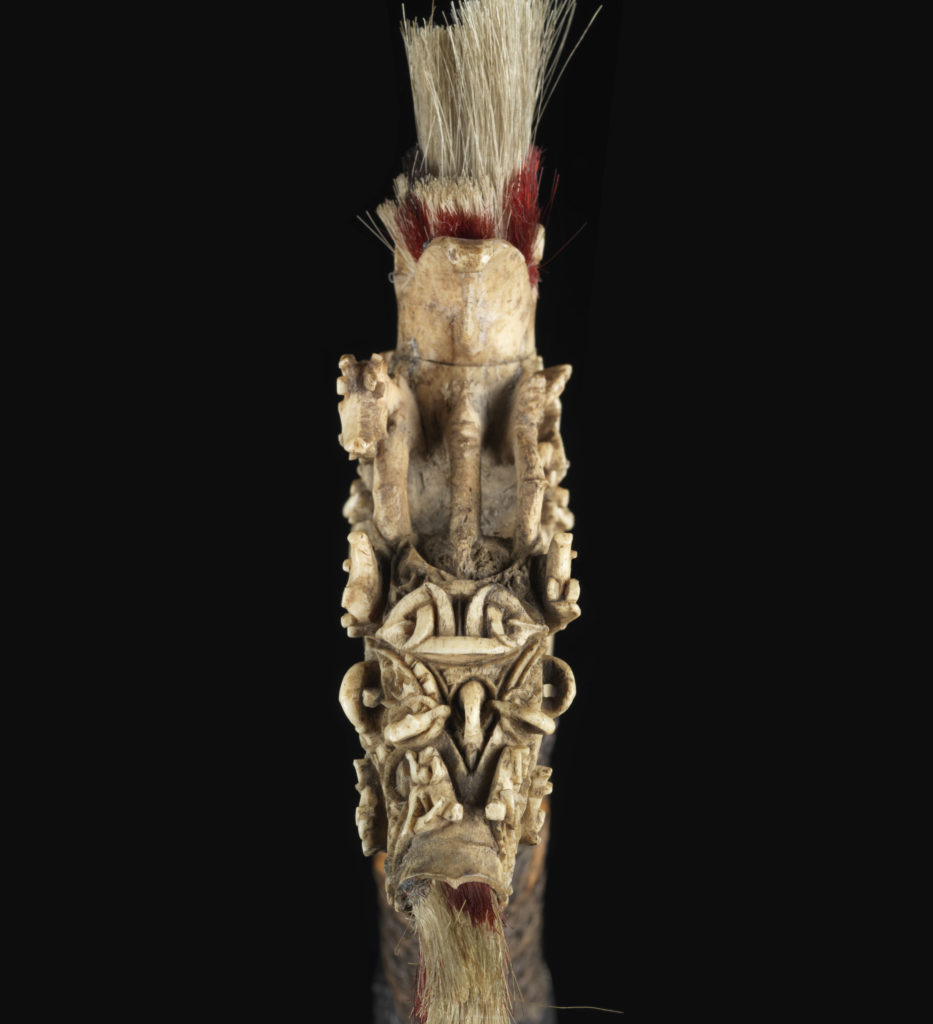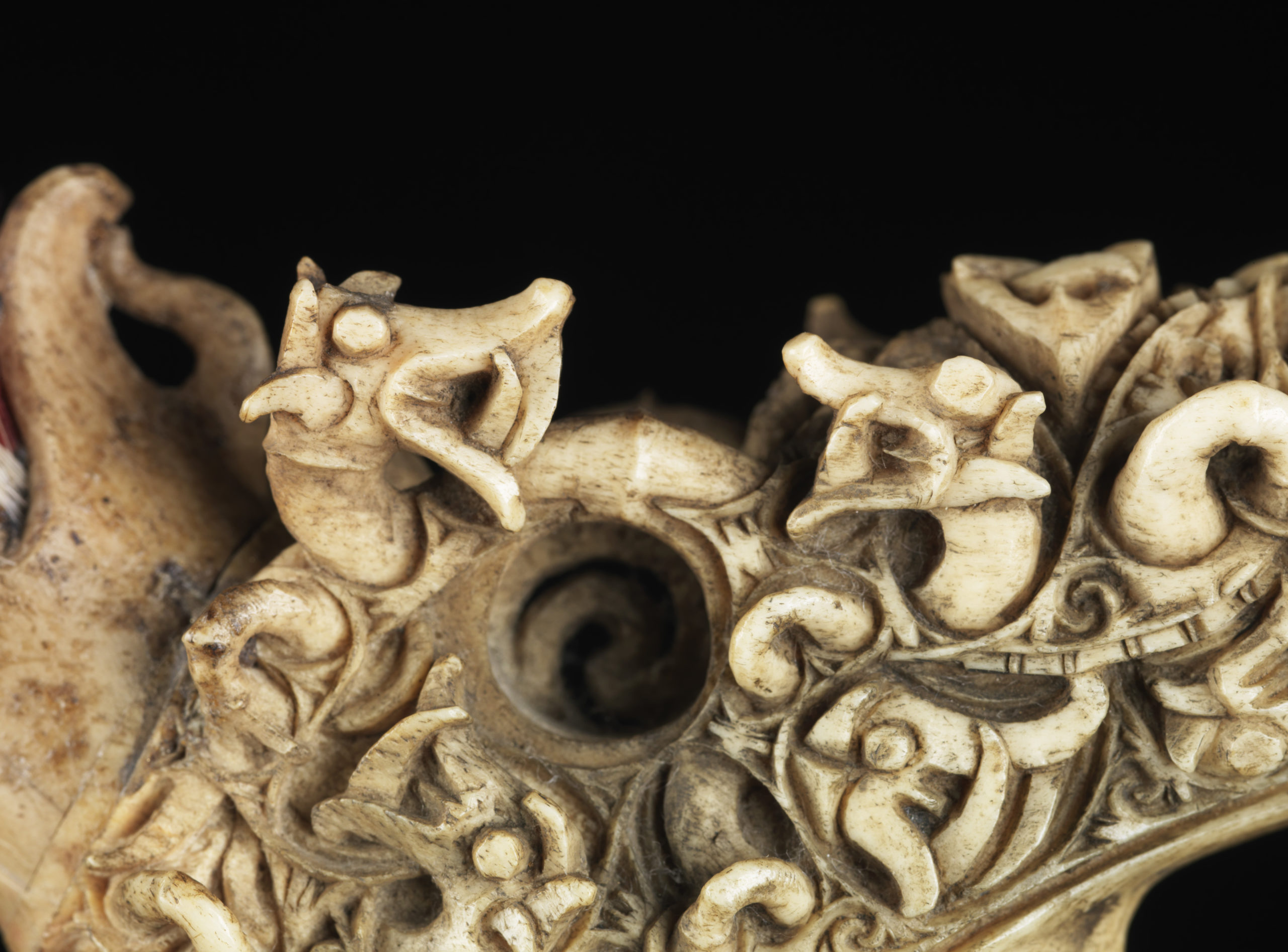Mandau-handle
An outstanding handle typical of the elaborate Kenyah style of the late 19th century and beyond. Very powerful is the pronounced figure on the back, which clearly shows that the “leech” motifs can often just as well be called the teeth (and claws) of the aso dragon. It is also easy to see how the limbs of the figure lying on the ground are transformed into an independent decorative element. The characteristic of the dissolution of the individual elements of the core themes of human-dragon / aso and fright mask as well as double spiral, on which the constellation is obviously based, is inherent in all good mandau handles and is grouped around the central theme of life – death – renewal, whereby intervention outside the natural biological processes is the task of the head hunter. The head hunter thus reproduces a primordial event carried out by the original deities and cultural heroes (in cultural studies: Dema deities, according to a term of the New Guinean Marind-Anim). The rededication of the life energy released by killing then takes place within the framework of certain cyclical rituals, which are in line with the agricultural cultivation cycles and are embodied by the double spiral, i.e.: the path to the underworld and back. This forms the core theme of this grip in a pierced, finely worked-out form, with the flanks forming a tangle of aso elements such as teeth and claws, leeches and limbs. In the typical Kenyah style, the realistic or zoomorphic aso was largely dispensed with.
The overlying figure “riding” the aso has an almost Dian or Bronze Age appearance. In fact, demonic warrior figures can already be found on the handles of Dian weapons (Yunnan, 4th century B.C.E.). These are already explicitly connoted with the ritual head hunting, as skull and head motifs suggest. The figure is also phallic; an immense limb hangs down between the stylised legs, which drastically illustrates the sexual or fertility connotation of head hunting.
The handle in its entirety, which is decorated in places with tufts of red and white goat’s hair – hair is a symbol of eternal growth – is representative of the relatively late style of high-carat mandau, in which the core elements are often placed in the foreground in a particularly concise manner. The quality of the carving, which is executed in very difficult to work Sambar deer antlers, is striking. The pictorial programme aso-dragon – demonic man or headhunter and soul paths (double spiral) is sometimes more strikingly placed in the foreground in kenyah handles, but also more abstract and representatively dissolved than in the quieter, flowing aso groupings of the kajan counterparts.
| Object | Mandau-handle |
| Culture | Borneo, Kalimantan, Dayak, Kenyah |
| Time |
Late 19th / early 20th century |
| Dimensions | Length 16 cm |
| Material | Steel, stag horn, rattan, hair |








